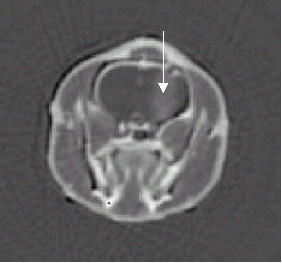- Home
- Users & Science
- Find a beamline
- Complex systems and biomedical sciences
- ID17 - Biomedical Beamline
- Photon Activation Therapy
Photon Activation Therapy
Introduction
Conventional therapy of high-grade glioma is unsuccessful because the long term survival is very low. We propose a new combined chemo and radio-therapy procedure, the photon activation therapy (PAT) which associates the radiotherapy procedure with synchrotron radiation of the tumour loaded with a a chemotherapic drug loaded with a platinum compound. This combined treatment takes advantage of the selective electron excitation and ionization of the high-Z compound introduced in the DNA of the tumor cell produced by the monochromatic X-ray beam. The physical explanation of the mechanism involves the release of high-LET Auger electrons. The Auger electrons release a large amount of energy in the immediate vicinity of their emission, in an average radius of some tens of nanometers. For therapeutic purpose we apply photo-activation on a target loaded with cisdiamminedichloroplatinum (II) (CDDP), a platinum complex, which is currently used for chemotherapy, by irradiating with monochromatic 78.4 (+/- 0.4) keV X-rays just above the K-shell edge of platinum. The first in vivo experiments with this new radiotherapy procedure have been applied on male Fisher 344 rats and irradiated at the ID17 biomedical beamline,. Highly promising results have been obtained thanks to the method, which have been developed in the RSRM team.
Materials and Methods
The rats were inoculated with glioma cells. On day 13 after the tumor inoculation, CDDP was injected intra-cerebrally at the tumor site and the irradiation is applied on day 14. The animals were set on a stereotactic frame rotating continuously on an axis orthogonal to the beam. The axis was positioned at the center of the tumor and the beam width adjusted to the tumor size. The irradiation geometry is shown on the figure below.


After each irradiation, we made an image with an iodinated contrast agent to verify if the rats effectively had a tumor (see figure).



